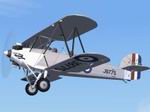
3.62Mb (2229 downloads)
FS2004
Hawker Tomtit Trainer V2 (Ground handling improved) RAF
trainer built in 1938. Ver.2, By Edward Cook. 3.8MB
Posted Jun 23, 2008 14:23 by archive
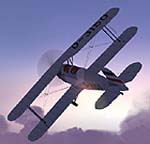
17.75Mb (4525 downloads)
FS2004
Bücker 131 Jungmann Version 2 Package.
The Bücker "Jungmann" was the first plane produced
by the new Bücker Flugzeugbau GmbH company founded in 1932
in Johannistal, Berlin. The prototype Bü 131A V-1, registration:
D-3150, was conceived as a training/private plane capable of
aerobatics and powered by a 80 hp (60KW) Hirth HM60R inline
engine. It made its inaugural flight on 27th April 1934. Later
production models, such as the 131B were available with more
powerful engines. The biplane was constructed under the leadership
of the Swedish technical director Anders J. Anderson. The Bücker
Jungmann served as the standard training-plane of the German
Luftwaffe and in total around 5000 were built. Model and Copyright
by Oliver Fischer 18.2 MB
Posted Jun 23, 2008 14:23 by archive

4.71Mb (2845 downloads)
FS2004
P-51B Mustang "Miss Dallas".
This package is the stand-alone WWII mustang repaint of JR Lucariny's
excellent P-51B with his permission. It's the plane of Ace Victor
J France of the 4 FG who had 8.66 kills. While chasing and downing
a Me-109 at low altitude, his plane was lost. He received the
Distinguished Flying Cross as well as the Purple Heart. Dana
Eng. 4.8MB
Posted Jun 23, 2008 14:23 by archive
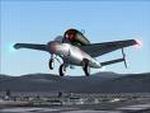
3.54Mb (3730 downloads)
FS2004
He162 Salamander.
Developed to meet an RLM requirement issued on 8 September 1944
for a jet fighter capable of entering mass production by 1 January
1945, the first He-162 flew just 89 days later. Despite difficulties
in production, over 300 were completed by V-E day and 800 more
were on production lines throughout Germany. The He-162 was
an advanced and capable aircraft but was too demanding for the
poorly trained pilots for which it was intended. By Alpha Simulations.
3.6MB
Posted Jun 23, 2008 14:23 by archive
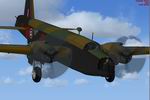
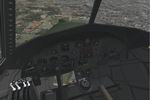
7.81Mb (3113 downloads)
FS2004
Vickers-Armstrong Wellington Set.
Wellington 1C, II and III. Vickers Wellington Mk.II\n\nThe prototype
Mk.II flew on March 3 1939 and was intended as an insurance
measure against non-availability of the radial engines. The
Mk.II utilized the Rolls-Royce Merlin X engine, greatly increasing
the operational altitude and service ceiling. Alphasim. 8MB
Posted Jun 23, 2008 14:23 by archive
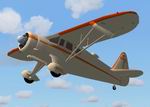
1.12Mb (2504 downloads)
FS2004
Howard DGA-15P.
The Howard DGA-15 was first produced in 1940 and was quite luxurious
for the time. About 40 were produced for the civilian market.
Later production was for the Navy as a air ambulence and the
Air Corps as a utility transport. This is a FSDSv3.51 project
compiled with Makemdl into FSX2004. It has the usual animations,
Nav lights and Landing lights. It uses .dds textures. The 2D
panel and VC are based on a early photo. The VC has working
gauges and animated controls. By Paul Clawson. 1.1MB
Posted Jun 23, 2008 14:23 by archive

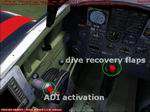
33.09Mb (9305 downloads)
FS2004
Republic P-47M-1 Base Package v2.3.
The Republic P-47M-1 was the fastest of the production Thunderbolt
models built by Republic based on a design from Major Alexander
de Seversky. An installation 'Wizard' will help you install
the multi-resolution P-47 Gmax model, including clickable
virtual cockpit, full animation, reflective textures with
dynamic shine, backlighted VC gauges, custom effects, HTML
checklists and documentation (enhanced with pages from original
Pilot Operating and Training Manuals) as well as droppable
tanks. The archive contains two different 3D models - one
classic 3D cockpit based on a D-28 and a modernized one with
mostly Concorde instruments - a 2D panel for those who want
(by hand activation necessary). It includes a 'bare' aluminium
base texture set. Sound package included. DXT3 as well as
high resolution 888-type 32-bit textures are included. Liveries
done for earlier versions up to v2.2 should fit this version.
For more changes vice versa v2.2 see included change log.
Package by Tom Kohler. Filename P47M_923.zip
33.9MB
FS2004
Republic P-47M-1 - Additional 3D model option & revised
base pack livery
(high & low resolution) texture sets for P-47M-1-RE -
base pack file 'P47M_923.zip'. Package also contains production
gauges and revised panel.cfg's. By Tom Kohler. 14.2MB
Posted Jun 23, 2008 14:23 by archive

5.59Mb (1601 downloads)
FS2004
Caproni - Pensuti 2.
Prototype GA aircraft. Designed to do "what a bicycle does
for the man on the road". Emilio Caproni died attempting
to save a life and did not see it fly. Circa. 1918 Upgraded
pilot, textures, engine and undercart. Ver. 03, By Edward Cook.
5.7MB
Posted Jun 23, 2008 14:23 by archive

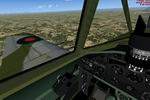
3.81Mb (6354 downloads)
FS2004
Hawker Typhoon Package.
ALPHA Simulations 2004. The Hawker Typhoon was an adventurous
design intended to take full advantage of unique and complex
Napier Sabre engine. This powerplant was a 24-cylinder arrangement,
essentially comprising two horizontally-opposed flat-twelve
engines conjoined in a pancaked manner. The engine had many
teething problems which were ultimately sorted, but prevented
the Typhoon from becoming the plane it should have been until
late in the war. The aircraft itself was not without its troubles,
many being lost due to the aircraft losing its entire tail section
whilst in flight! The engine never proved effective at the high
altitudes of aerial combat, and the aircraft was thus relegated
to the more hazardous role of ground attack, where it came into
its own and wreaked havoc on enemy supply lines and communications.
By Alpha Simulations. 3.9MB
Posted Jun 23, 2008 14:23 by archive
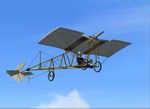
5.39Mb (3612 downloads)
FS2004
Demoiselle 22 Package.
Real aircraft created by Alberto Santos Dumont, in 1909, The
brazilian flyer. Take a flight back in time with the first ultralight.
New version with highly detailed model, moving parts, virtual
cockpit, created by Marco and Marcel Di Foggi in FSDS3-5. Complete
updated version. 5.5MB
Posted Jun 23, 2008 14:23 by archive


